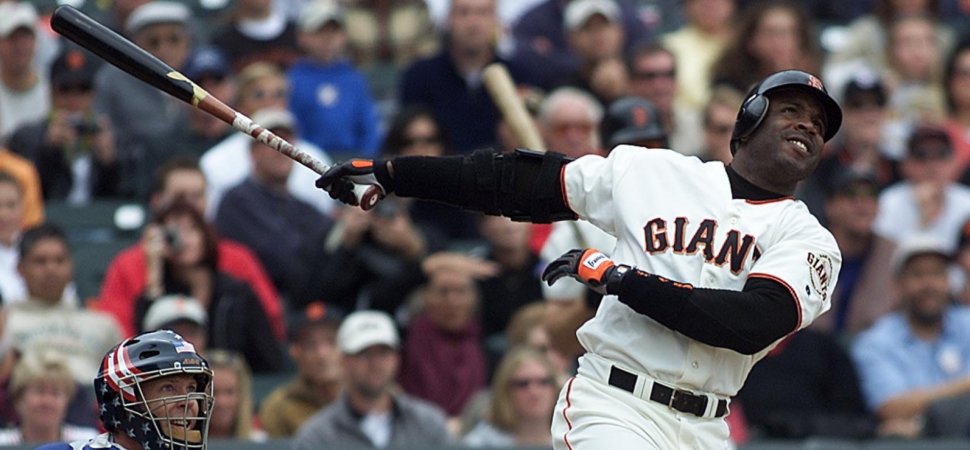
31 May 4 Negotiation Tactics That Helped Barry Bonds Become the Richest Athlete in Sports History
The New York Yankees offered $40 million for Bonds. Many hours and negotiations later, the San Francisco Giants scored the winning bid. Here’s how.
In 1992, having just finished his contract with the Pittsburgh Pirates, the outfielder was 28 and about to enter the prime of his career. The New York Yankees, perennial bidders for the most expensive free agents available, had made an offer of nearly $40 million.
The San Francisco Giants, meanwhile, were a far cry from the high budget operation they are today, playing in a decrepit old stadium and having recently flirted with the idea of relocating to Tampa Bay. That’s why Beverly Hills Sports Council co-founders and agents Rick Thurman and Dennis Gilbert were so shocked when Safeway owner Peter Magowan, who was in the process of buying the franchise, called to inquire about their client.
Magowan exceeded the Yankees’ offer by a few million, but the Yankees were still the Yankees: a team with a rich, winning history, and a huge market with plenty of opportunities for lucrative endorsements. Magowan tried a different tack: Bonds’s father, Bobby, was an outfielder for the team in the ’60s and ’70s, and his godfather was Giants legend Willie Mays. Bringing Bonds back to the Bay Area would be a joyous homecoming.
“That’s great idea,” Thurman and Gilbert told Magowan, “but it doesn’t really play a huge role in Barry’s decision.’ ” This part wasn’t exactly true–Bonds was very interested in the idea of returning to his San Francisco roots.
“From a negotiation standpoint,” Thurman tells Inc., “you don’t necessarily have to disclose that.”
Later that week, at the Major League Baseball general manager winter meetings in Louisville, the two sides traded offers back and forth. Thurman and Gilbert pushed for a larger total dollar amount, plus stipulations like a signing bonus and monetary awards for MVPs won. The two sides continually met in hotel conference rooms for two or three hours at a time, then retreated to their quarters and refreshed, reconvened, and did it all again. Throughout all of it, the specter of Bonds wearing Yankee pinstripes hung overhead.
Finally, after a 40-hour marathon, the two sides had an agreement in place. But there was still a big catch: Magowan hadn’t yet been approved by Major League Baseball to buy the Giants.
The two sides agreed on a stipulation. Whether or not the sale of the team was approved, Magowan would be on the hook for Bonds’s contract. Should the sale fall through and another team wish to pursue Bonds, the player could switch teams, and Magowan would pay the difference between that team’s offer and the agreed-upon Giants deal.
“To this day,” Thurman says, “I’ve never heard of another owner doing that.”
Later that week, Bonds and the Giants announced their new deal: six years and $43.75 million, including a $2.5 million signing bonus and rewards for each MVP won. It was, at the time, the biggest contract in sports history.
Here’s what you can learn from Bonds’s unique negotiation.
1. Assign values to intangibles…
Money is easy to measure, but abstract factors can be trickier. Kevin Mohan, a negotiation professor at Harvard Business School, encourages bargainers to create a scoring system. Give each asset a certain dollar amount or points value–so, for example, playing in San Francisco might be worth $5 million in actual dollars. This will help you maintain a grasp on just how much you’re gaining or sacrificing at every turn of the negotiation.
2. …But keep those values a secret.
“If the Giants had known Bonds really did value a San Francisco homecoming,” says Melissa Thomas-Hunt, a professor of negotiation at the University of Virginia, “they would’ve had less reason to think he would walk away. It’s likely they would have been less generous with the financial aspects of the offer.”
Mohan agrees: “Downplaying the fact that an intangible is worth something tells the other side: You can’t just pay me in story value–you have to pay me dollars.”
3. Downplay your asks–and highlight your concessions.
Keeping your opponent in the dark on how much you value certain aspects has another advantage: It gives you more control over how the other side perceives the negotiation.
“If someone is giving something to you, you act like it’s not worth that much to you,” Mohan says. “If you’re giving something, it’s worth a lot.” If you tell a potential contract worker you’re covering their health care, it’s a huge deal, while the fact that they’re willing to work Saturdays is not. “Minimize and maximize values to your advantage,” says Alison Fragale, a negotiation professor at the University of North Carolina. “You’re telling them, ‘I don’t need to reciprocate because you gave me something I didn’t really want.’ ”
4. Use contingencies.
Unknowns can make negotiation participants uneasy. To deal with that, both Bonds and Magowan made use of contingencies. “If the future will be known with certainty at some point,” Fragale says, “instead of arguing about it, you can bet on it.” For Bonds, this meant incentives for MVPs–a win-win, since Bonds performing so well would likely mean an increase in value for the franchise. It’s similar to the idea of offering stock options as part of a deal, Fragale says: Stock is essentially a bet on the success of the company.
If you have extra assurance that an unknown isn’t really all that unknown, putting your signature next to it can earn you points with the other side. This is what Magowan did by agreeing to pay Bonds’s contract no matter what. “Magowan must have thought his purchase was close to a sure thing,” Mohan says. “In that case, it’s not that much of a concession–but it looks like it is, so it’s smart to give it.”